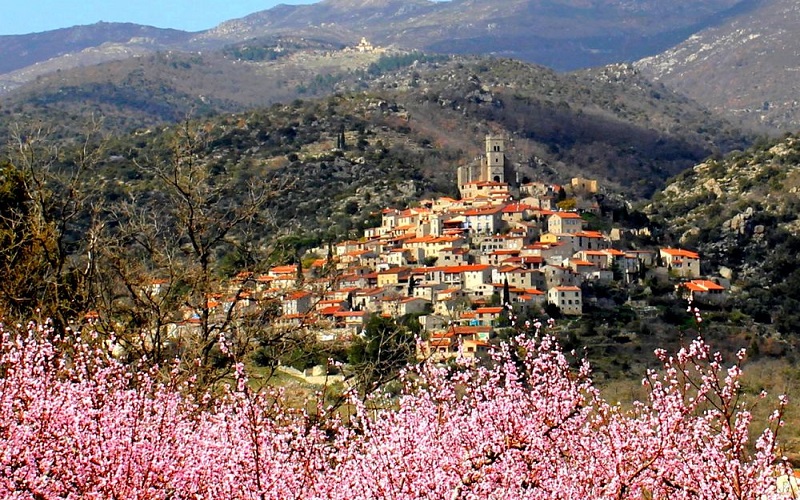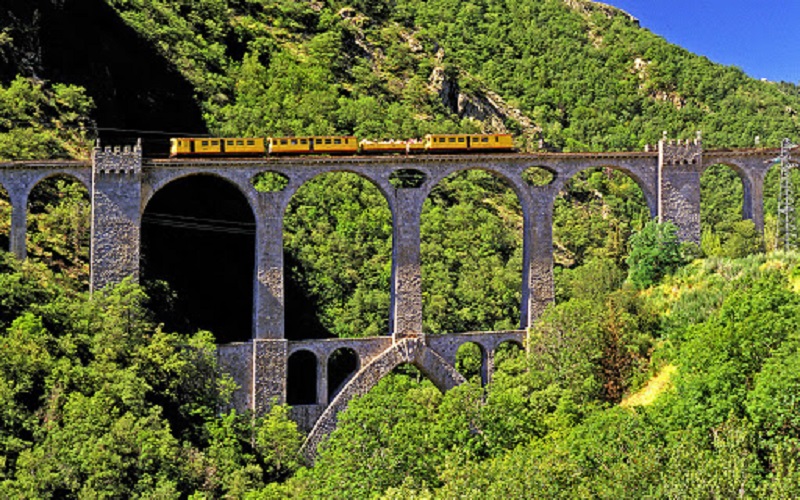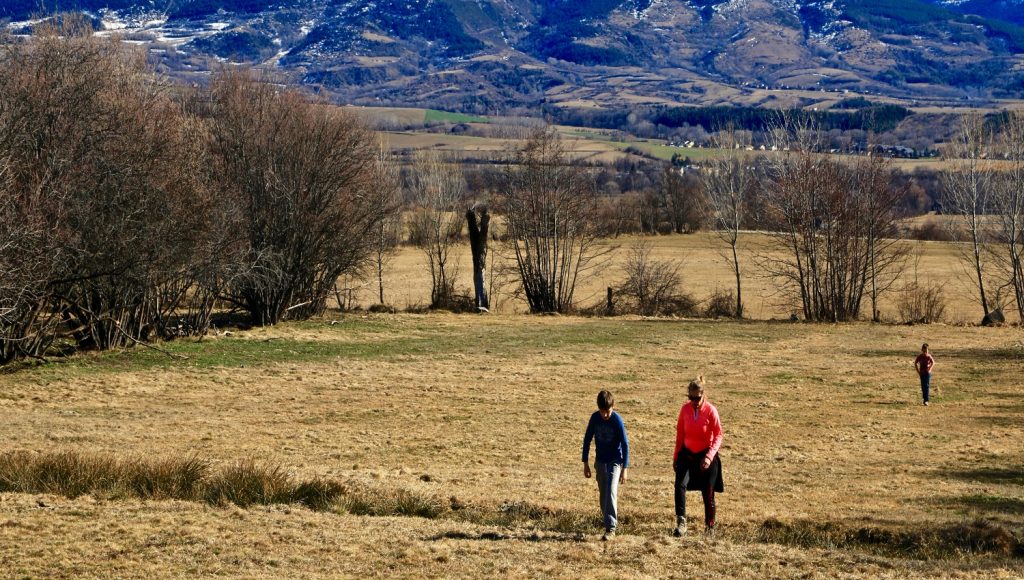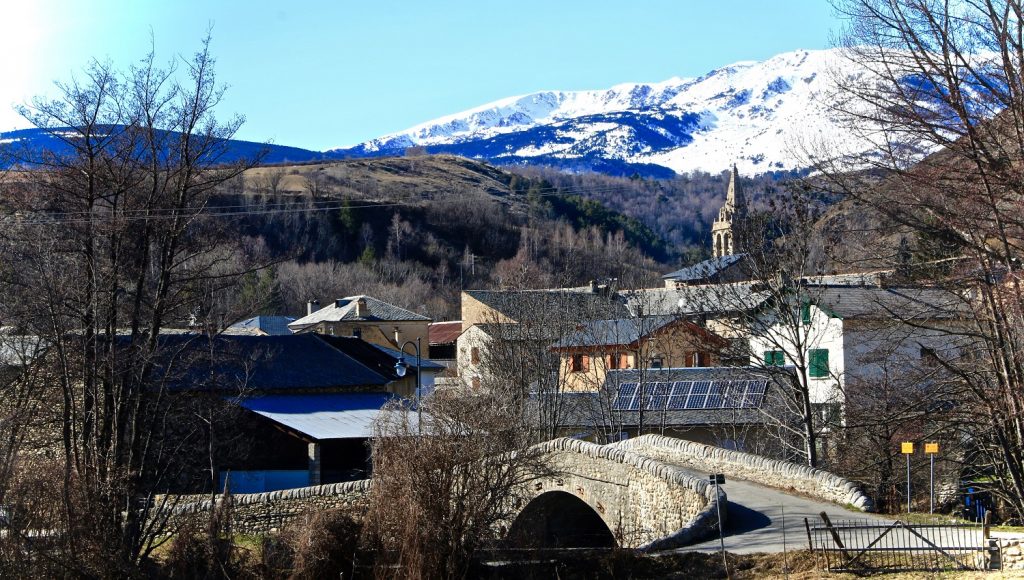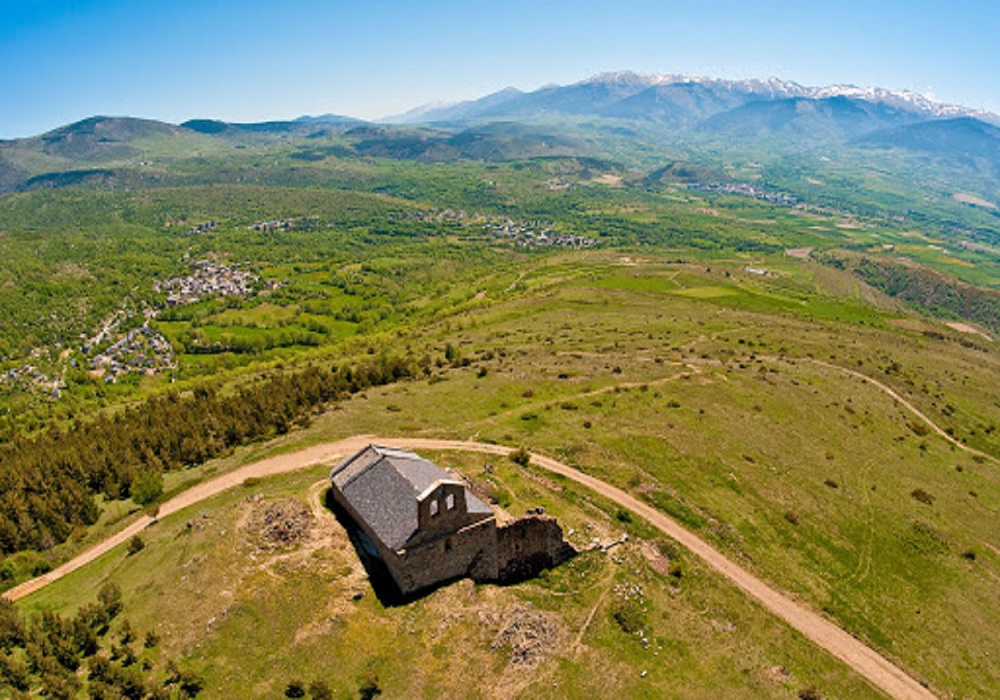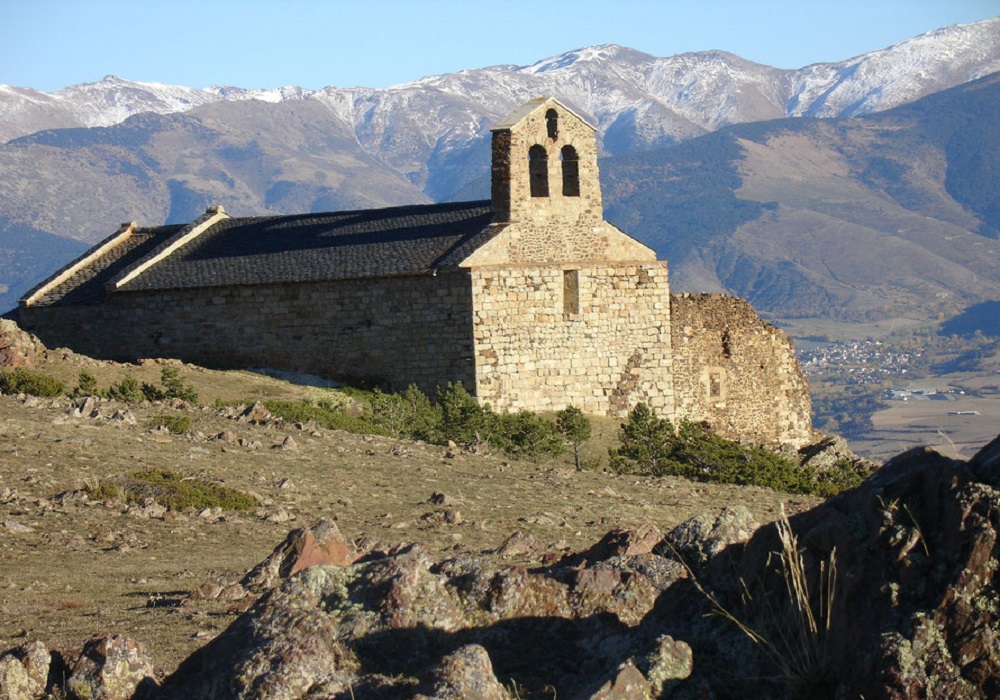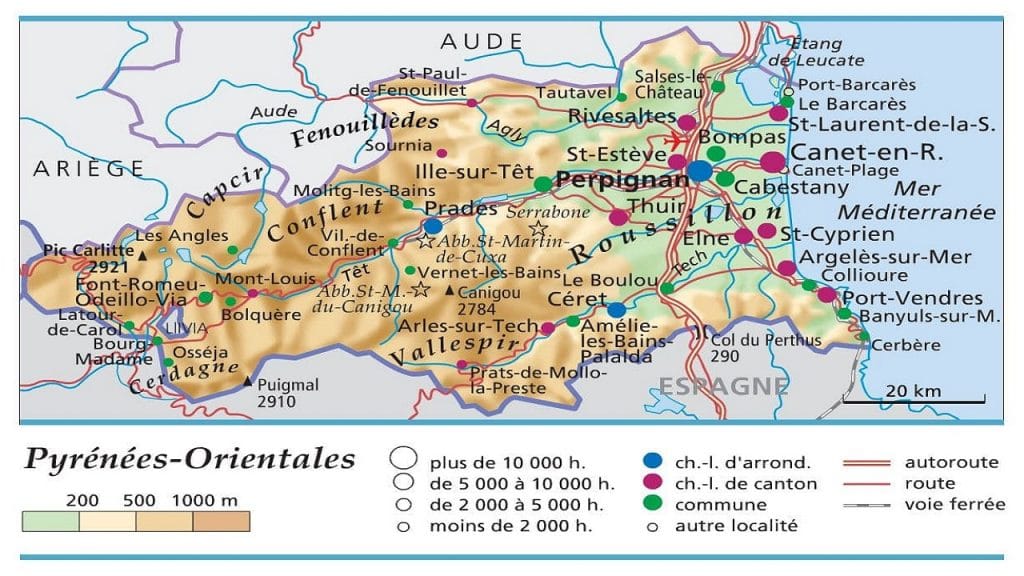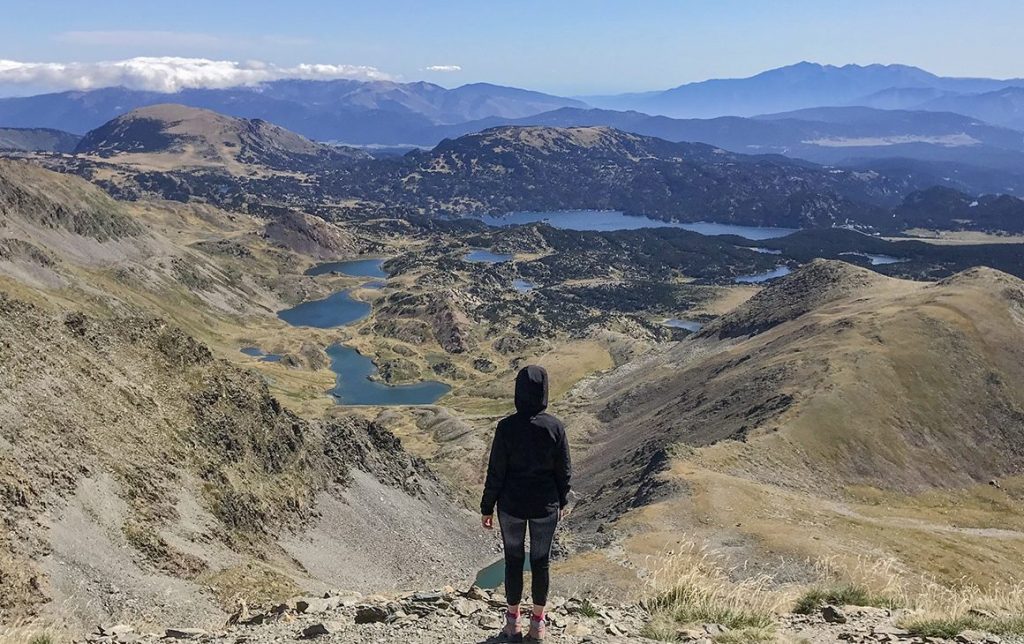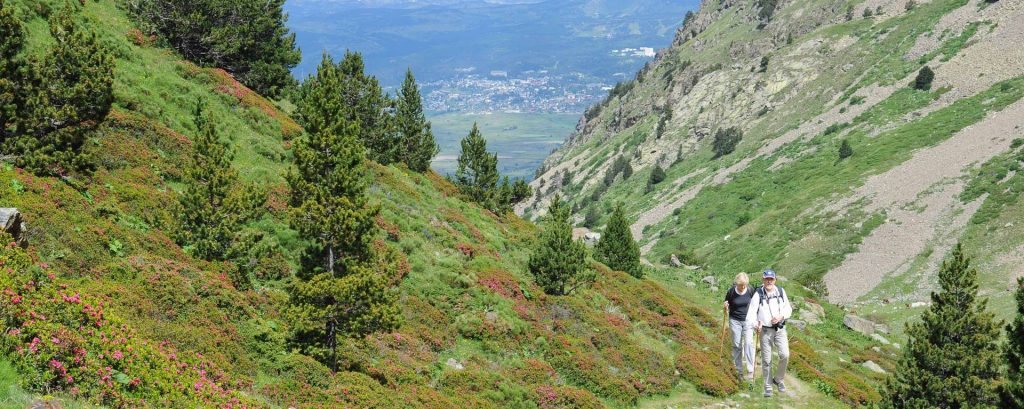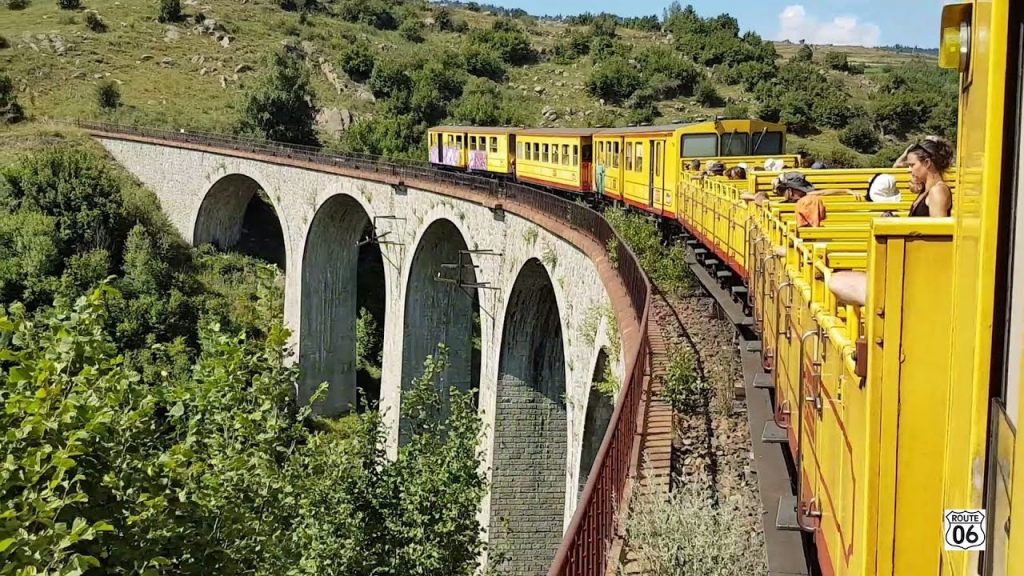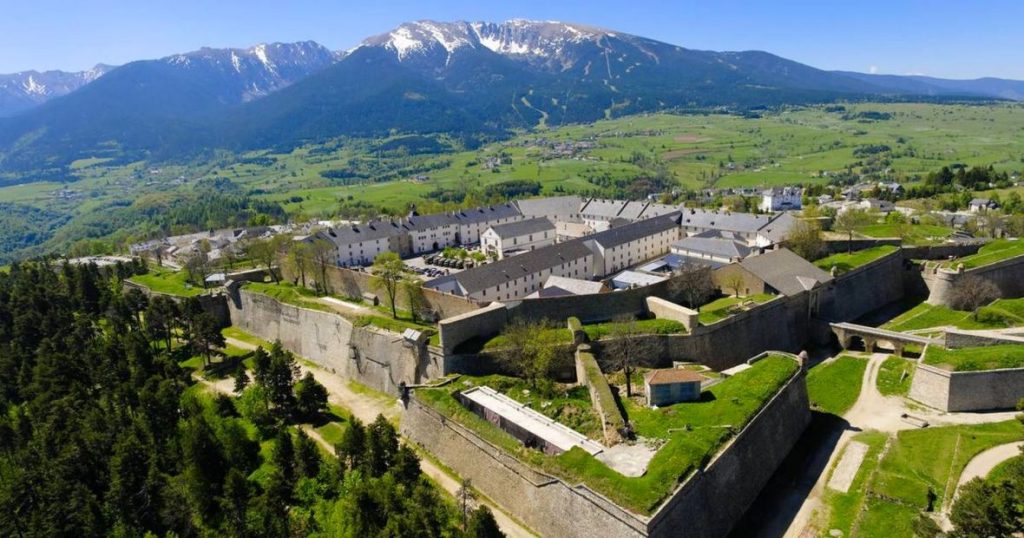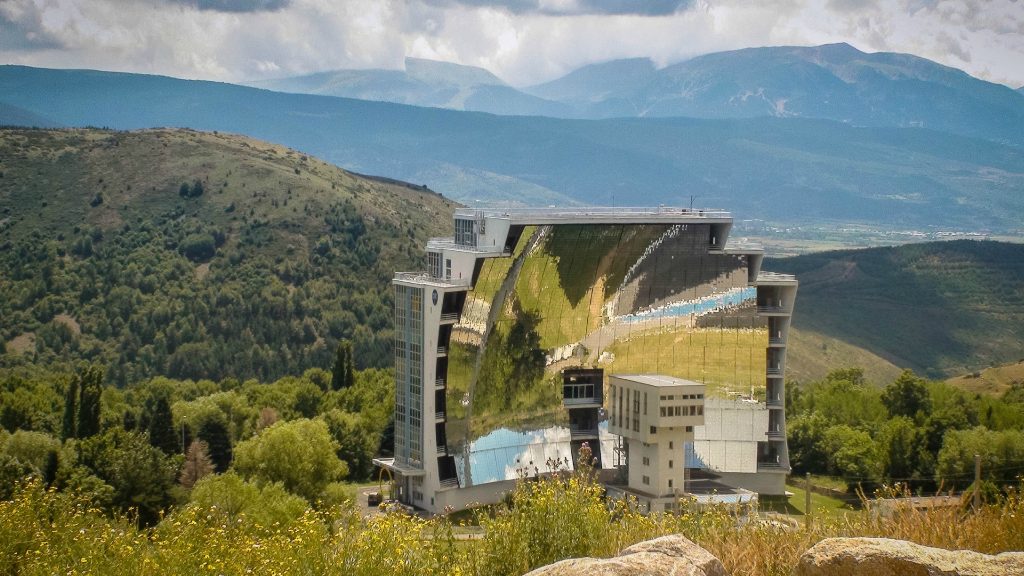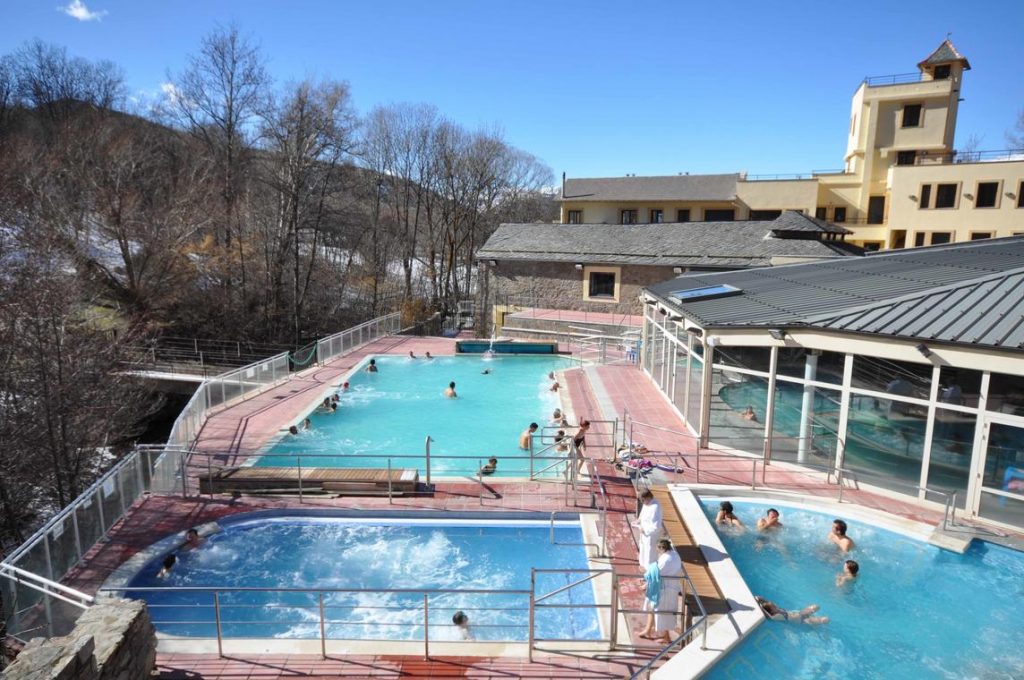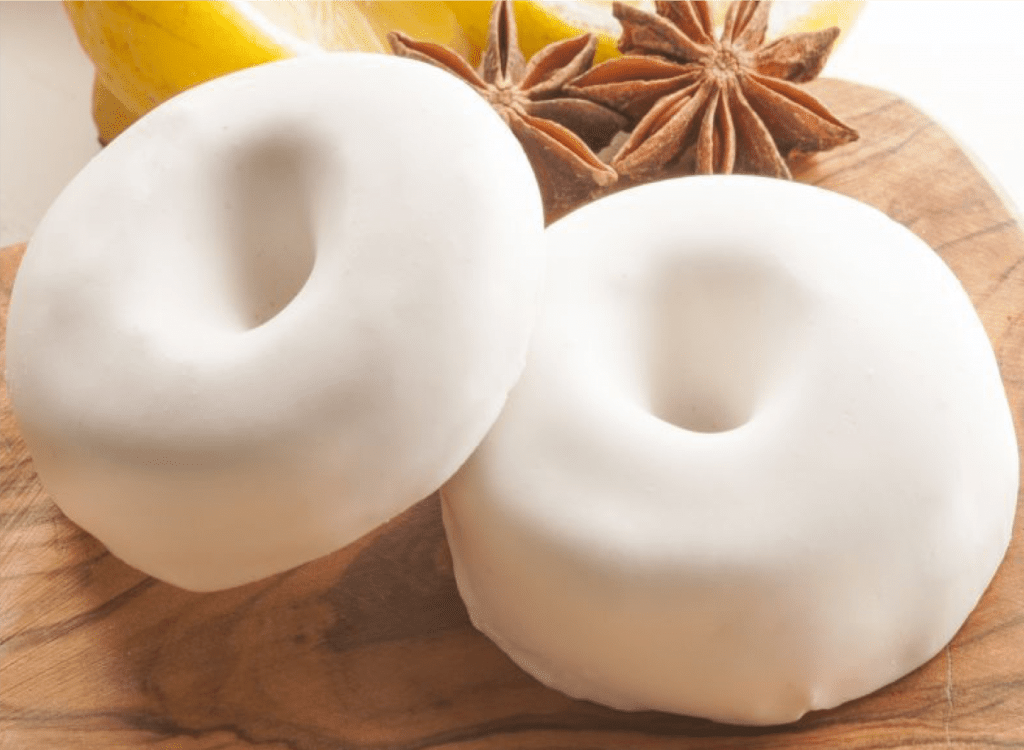Discover what to do in French Cerdanya, the hidden treasure of the Eastern Pyrenees! Famous for its exceptional sunniness, surrounded by majestic mountains and picturesque villages.
I could tell you that I want to talk about the Cerdanya because it offers almost 3000 hours of exceptional sunshine per year, a low hygrometry and a very pure and dry air at an average altitude of 1200m to 2000m. I could also tell you that it’s the perfect place for outdoor lovers, with hundreds of hiking paths, dozens of ski slopes, a few impressive canyons and excellent conditions for paragliding. I could also tell you that this region hosts one of the most picturesque and scenic railway of France, called the Yellow Train, that takes you from Latour de Carol until Villefranche de Conflent in 2.5 hours, at the average speed of 30km per hour…. Read more to find out what to do in French Cerdanya!
But the truth is that I want to make this post because Cerdanya is actually a part of myself, as I used to spend there all my holidays, from the age of 1 to 18, in our family vacation home set in Ur, a small village not far from the Spanish border. Becoming an adult, I returned to Ur many times with my friends, then with my wife and kids, trying to share with them my love for this region. Now I don’t go there as often as before, but this is where I still feel at home, among these mid-range and accessible mountains -the highest point is the Carlit mountain, « only » 2921 meters high- and the beautiful and peaceful lakes and forests of the Catalan Pyrénées Regional Natural Park.
The Cerdanya is where my heart truly beats, though I’ve traveled around the world to more than 40 countries during the last two decades. I saw the Maya pyramids in Mexico, the Taj Mahal in India, the Angkor temples in Cambodia and the rocky churches of Lalibela in Ethiopia…but the small 13th century chapel of Belloc, built atop a small hill above the village of Ur, is the most sacred place on earth for me! Every time I go back to our family vacation home, I take the time -around 2 hours to go and return- to run or hike to the summit of this gentle hill, and spend a few minutes inside this tiny chapel, which is always open. I’m still not sure that God exists, but if He does, there’s no other place where I feel His presence so intensely…This is a very personal and intimate feeling, like looking back to my whole childhood and roots. I guess this is what you feel when you really « belong » to a place, wherever it can be on earth.
But let me tell you more about the treasures hosted by Cerdagne, not only for me, but also for you, if you dare to make a small detour there, coming from Carcassonne to Provence, or from Barcelona to Perpignan and exploring the intimate Eastern Catalan Pyrénées.
Located at the easternmost point of the mountain range, the Catalonian Pyrénées are home to a veritable melting pot of cultures. The local people delight in their Catalan origins, and wear their identity with pride. Elder people often speak « catalan » the local dialect, which is also taught to younger generations in many schools of the area. The region is delimited by the Puymorens pass on the western side, and the Mediterranean sea on the eastern side. The southern limit is the border with Spain, and the northern limit is the foothills of the Pyrénées range itself. The only big city included in this department is Perpignan, with a population of 120,000 people, on a total of 480,000 for the whole department of Eastern or Catalan Pyrénées. The population of Cerdagne, which is a mountainous plateau nestled in the middle of the department, around 100kms from Perpignan, is only 30,000 inhabitants, split in around 50 villages. This is a very rural area!
In 2004, the region received French “Regional Park” status, with the aim of protecting its rich and sometimes vulnerable landscapes.
The lakes of Bouillouses and their surroundings are known throughout France and Spain for their rugged landscape and many lakes. At an altitude of 2,000m the main lake is the highest lake accessible by road and chairlift in the whole mountain range. Once overrun with cars, vehicle access to the area is now strictly controlled and regular shuttle buses are now the only form of motorised transport available from April to October. Alternatively, you can take a chairlift from Font-Romeu.
An impressive dam was built on Lake Bouillouses in the early twentieth century to control the flow of the river Têt and provide electric power to the touristic mountain railway – the “Train Jaune.”
But apart from the big main lake and its dam, what makes this place a paradise for hikers and anglers are the numerous smaller lakes, called the Lower Lakes and the Upper Lakes, the latter being just at the foot of the Carlit, the highest peak of the Catalan Pyrénées. You can make a day hike around the Lower Lakes and overnight in a rustic shelter or cottage, or in the more luxury mountain resort of “Bones Hores” (Good times in Catalan dialect). Then make a second day excursion to the Upper Lakes the day after.
The climbing of the Carlit (2,921m), though not very technical in summer, is challenging if done in winter and requires specific equipement (ropes, cramps, ice axes…).
Known as the “Valley of Flowers,” Eyne was classified as a Nature Reserve in 1993, and is a great favourite among gardeners and botanists. Known since the seventeenth century, and recognized since the eighteenth century, the valley has served as a study laboratory for some of France’s most famous botanists – Guan, Bourguat and Razoul (1767), Andanson (1779) and Candolle (1807) among them. To date, five hundred plant species have been identified, among them many endemic, rare and unique, appearing on the national list of protected species. From spring to autumn all the colours of the rainbow take their turn, with daffodils, forget-me-nots, blueberries, gentians, buttercups, lupins, rhododendrons, martagon lilies, roses and crocuses each taking their turn. The valley is also famous for more than sixty species of butterflies. Start your visit by finding out more at the Maison de la vallée d’Eyne.
The Yellow Train, also known as the “canary” due to its color, connects Villefranche-de-Conflent (427 metres altitude) to Latour-de-Carol (1,232 metres) over a distance of 63 km, climbing 1200 vertical metres to Bolquère, the highest railway station in France at 1593 meters. The full journey takes three hours which will give you time to photograph the landscape of the valley of the Tet and Cerdan plateau.
The line runs all year round, serving 22 different stations. During the summer season, the Yellow Train has open wagons for a real mountain experience – you’ll embark on a fascinating journey through the Pyrenees. From one station to the next, there’s an entire heritage to discover. The track passes through nineteen tunnels (including one tunnel 337 metres long at Planes, and the Pla de Llaura tunnel near Ur, 380m long) as well as passing over numerous bridges.
The citadel is listed as a UNESCO World Heritage site, built in the 17th to defend the new French border with Spain. Mont-Louis is one of nine towns entirely built by France’s greatest military architect, Sébastien Le Prestre de Vauban. In 1679, Louis XIV (nicknamed the Sun King) approved the financing of Mont-Louis, defending the passage to the Roussillon region of France. Inaugurated in 1681, Mont-Louis completed the line of defences stretching from Mediterranean Sea. Created from scratch by Vauban, it is a perfect example of 17th century fortified military architecture in which Vauban was able to express his creativity fully. Mont-Louis still has a military function today as the National Commando Training Center is housed in the citadel buildings.
The Odeillo solar furnace, larger than the Arc de Triomphe, is powered by the sun. It is one of the most powerful in the world.
A major site in our scientific heritage, the first semi-industrial scale solar furnace in the world. was built here. Its reflector has been registered as a Historical Monument since 2009. It houses the PROMES, a laboratory and research unit with an international reputation.
Built between 1962 and 1968, Odeillo solar furnace was put into service in 1970 for scientific research, it is one of the two largest furnaces in the world, (the other being in Uzbekistan) it is 54m high and 48m wide, it is composed of 63 heliostats (mirrors) and has a power of 1 000Kw. The fields of research are extended to the aeronautical and aerospace industries.
After skiing or hiking, in both summer and winter, the sulphurous waters are the ideal way to relax and recuperate.
The virtues of the thermal springs have been recognized for centuries—the waters were known and sought-after even in Roman times.
Built outdoors, among the trees, with a sumptuous view of the peaks of the Eastern Pyrenees, the Bains de Dorres hot spring offer nature lovers a moment of pure rest and relaxation. Whatever the weather, the water is always at 38 °C in the two outdoor pools, soothing tired muscles even when the ambient air drops below freezing in winter. The two outdoor baths (one old, one new) are complemented by two antique baths carved into granite blocks. After a day of hiking or skiing at the local resorts, a one-hour bath in the Dorres thermal springs will sooth away the aches and pains of the most hardened of athletes.
Nestled between mountains and the river Segre, the Llo Baths are constructed around a natural hot spring and consist of two parts:
– an inner area with sauna, hammam, jacuzzi and pool with water jets and waterfalls,
– an outdoor area with outdoor jacuzzi, and an invigorating spa bath with powerful tonifying jets. Sun loungers for relaxing or floating on a bubble bed, with a symphony of underwater music.
Apart from these 2 beautiful natural hot springs, there also five spa towns in the Eastern Pyrenees that offer spa treatments and massages.
You will find in Cerdanya something to delight the finest palates.
Cerdanya cuisine is full of surprising flavors and aromas, it is rich and varied and is based on its fundamentals, quality farm products: breeding, cultivation of cabbage, turnip, potato, as well as only pears, apples and quince trees.
Lambs and calves raised both on mother’s milk and on high mountain pastures will give very tasty meat labeled for its quality and origin. As for the pigs raised in the wild, they will be transformed into mountain ham, Catalan sausage, sausages, country pâté, or even “pa de fetge” all this in the tradition of Cerdagne cured meats. Among my favorite pastries, there are the “rosquillas”: small round biscuits coated with lemon-falvored icing that you eat with abandon with a coffee or for the afternoon tea.
So for all these reasons and treasures, I hope that you’ll take the time one day to visit this lovely region of Cerdanya, and why not, meet me during one of my “pilgrimages” to the Belloc chapel!
This region can be included in some of these itineraries on our website : Food, Culture and Wine in Northern Spain and Southern France, Self-drive tour from Barcelona to Toulouse.
I hope you enjoyed this post on what to do in French Cerdanya as much as I had a great time writing it. If you are interested check out my previous article on the GR34 in Brittany: hiking the waves on the customs trail.



